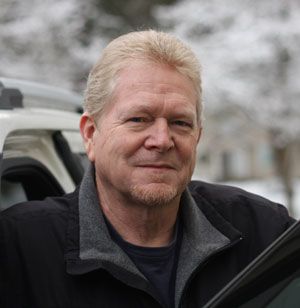Errors as learning tools
During driving, driving errors occur. Please tolerate other’s mistakes, but don’t tolerate your own. If you are lucky enough to live through their mistakes, you should learn from them.
If another driver commits an infraction of driving’s formal rules or informal etiquette, give them consideration, and try to decide why they would drive that way. Remember their example in order to avoid the same behavior yourself.
When you make a driving foul-up, get mad at yourself. Decide why you screwed up — whether it was inattention, distraction, inexperience, or lack of knowledge — and take the steps needed to improve. When you are on the receiving end of a horn-blow — unless it’s coming from a clueless driver honking at you while sitting at a red light with a right signal blinking, facing a “NO TURN ON RED” sign — you may have made an error.
It’s encouraging that many drivers are learning and improving — some, even as a result of this column. Last month, a reader told me that he is now making free left turns from a two-way to a one-way while facing a red light, but is now aggravated by those who don’t. Congratulations — those left turns are improving the efficiency, safety, and predictability of your driving!
And absent a sign forbidding it, please take your free right turns upon red-light indications after stopping and when cross traffic allows. Not doing so compromises efficient traffic flow. Unless you are driving a bus downtown for the Spokane Transit Authority (they don’t take rights on reds), other drivers expect you to move. That’s because it is both legal and expedient to do so.
Small things, like failing to make free turns, can easily be the impetus for escalation to big road rage incidents. That’s not a good thing, but it is true. A partial list of the things that annoy other drivers: tailgating, perpetual left lane travel, fluctuating speed, no signal use, driving in blind spot, speeding, going too slow, blocking intersections, and not taking free turns on red. Do your best to avoid that stuff and if it happens, use it as a learning tool to cease the behavior.
Another thing making drivers angry annually around here is the preponderance of potholes. We should be used to them by now — they occur as a result of every year’s freeze and thaw. In a perfect world, they’d be filled the moment they opened up — but the world is not perfect. I believe that it is a driver’s task to avoid these ubiquitous chasms by straddling or steering around them. This maneuver doesn’t require the skills of a pro — if you watch the road surface, you can miss the holes. Oh sure, on a rainy night, or during a lax moment, I’ll crash through one of them. But to me, it’s a driving error on my part — one that I will learn from, and try not to repeat again soon.
So, mistakes will always happen, and we can all hope that ours are not catastrophic. But when we inevitably make driving errors, it’s best to acknowledge and identify them, striving to avoid committing them in the future. Foul-ups can obviously be catastrophic — if you make it through unscathed once, you may not be so lucky twice. That’s why it’s so important to use the error as a learning experience and not repeat it.
Readers may contact Bill Love via e-mail at precisiondriving@spokesman.com.
